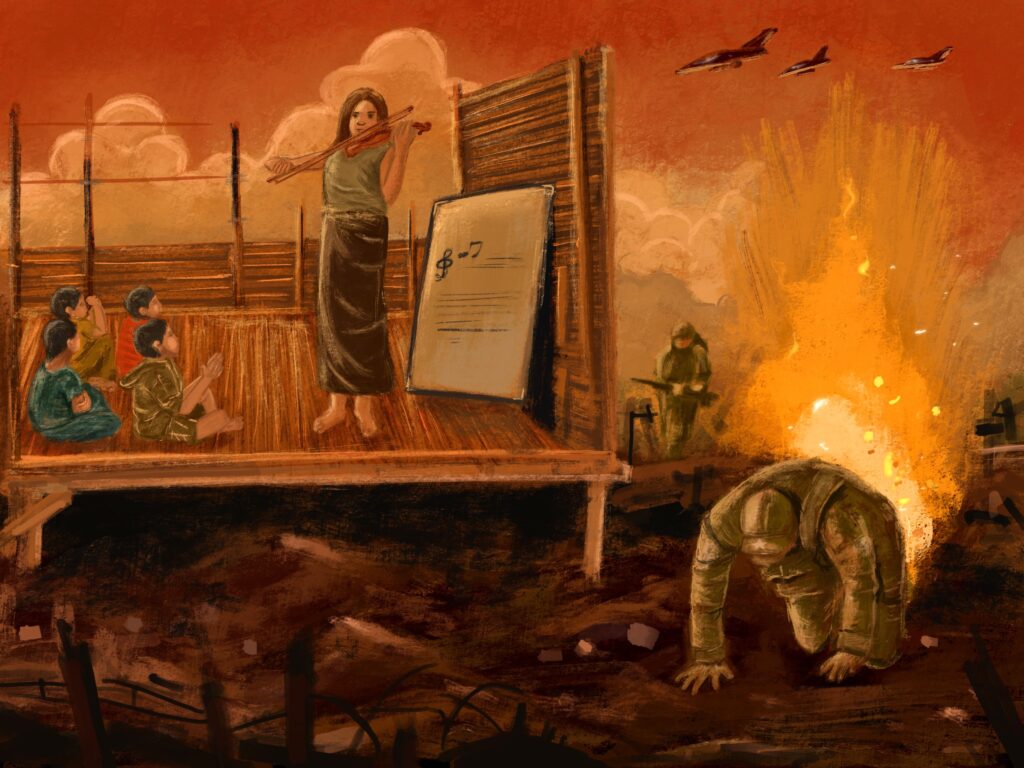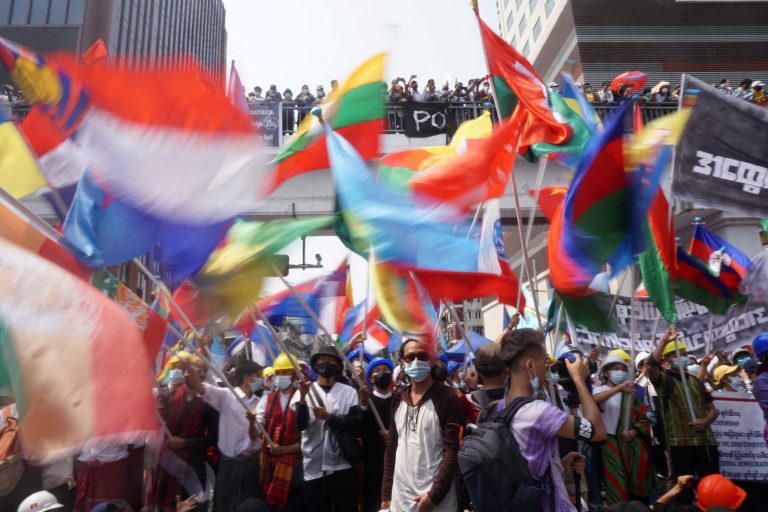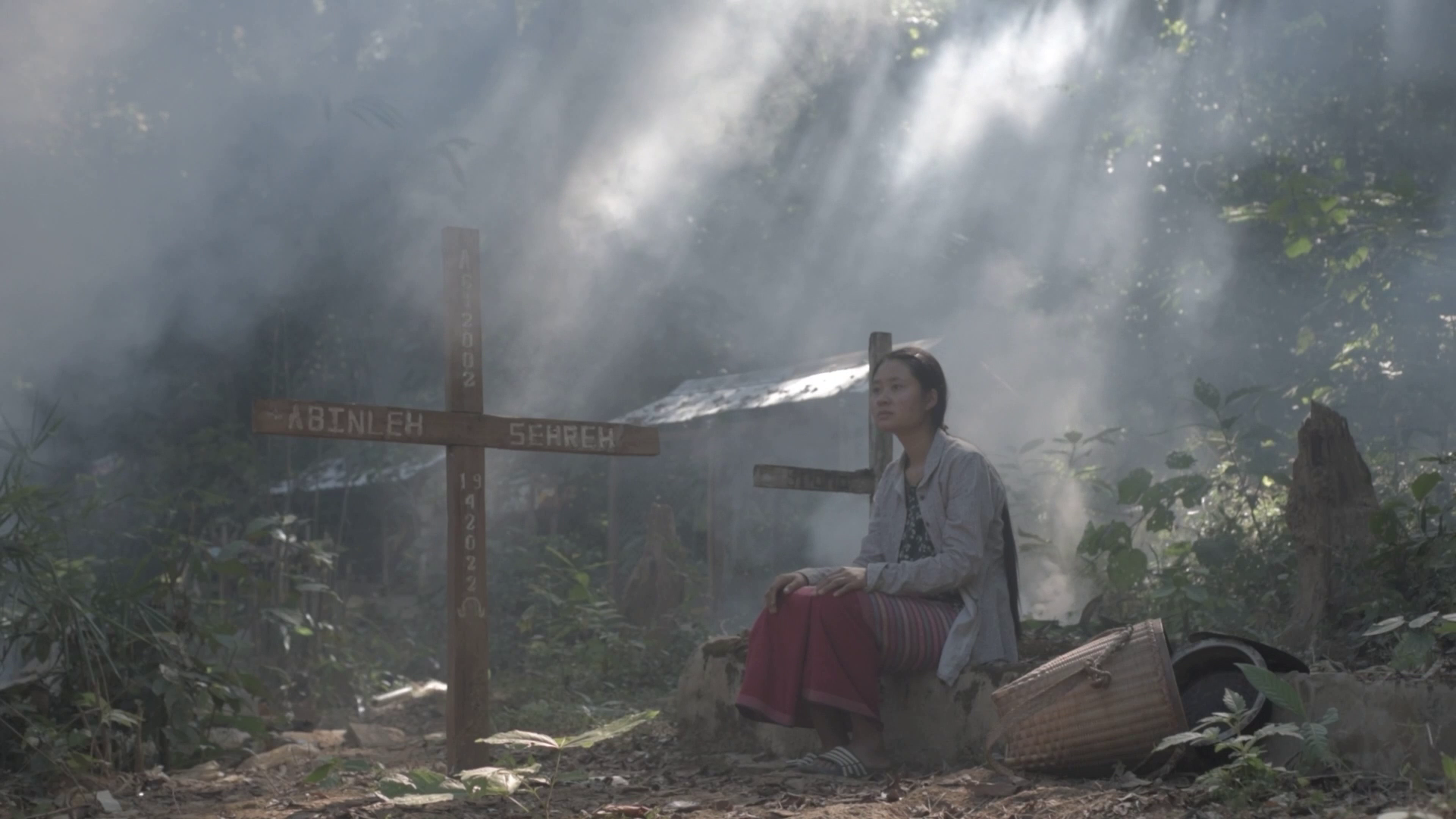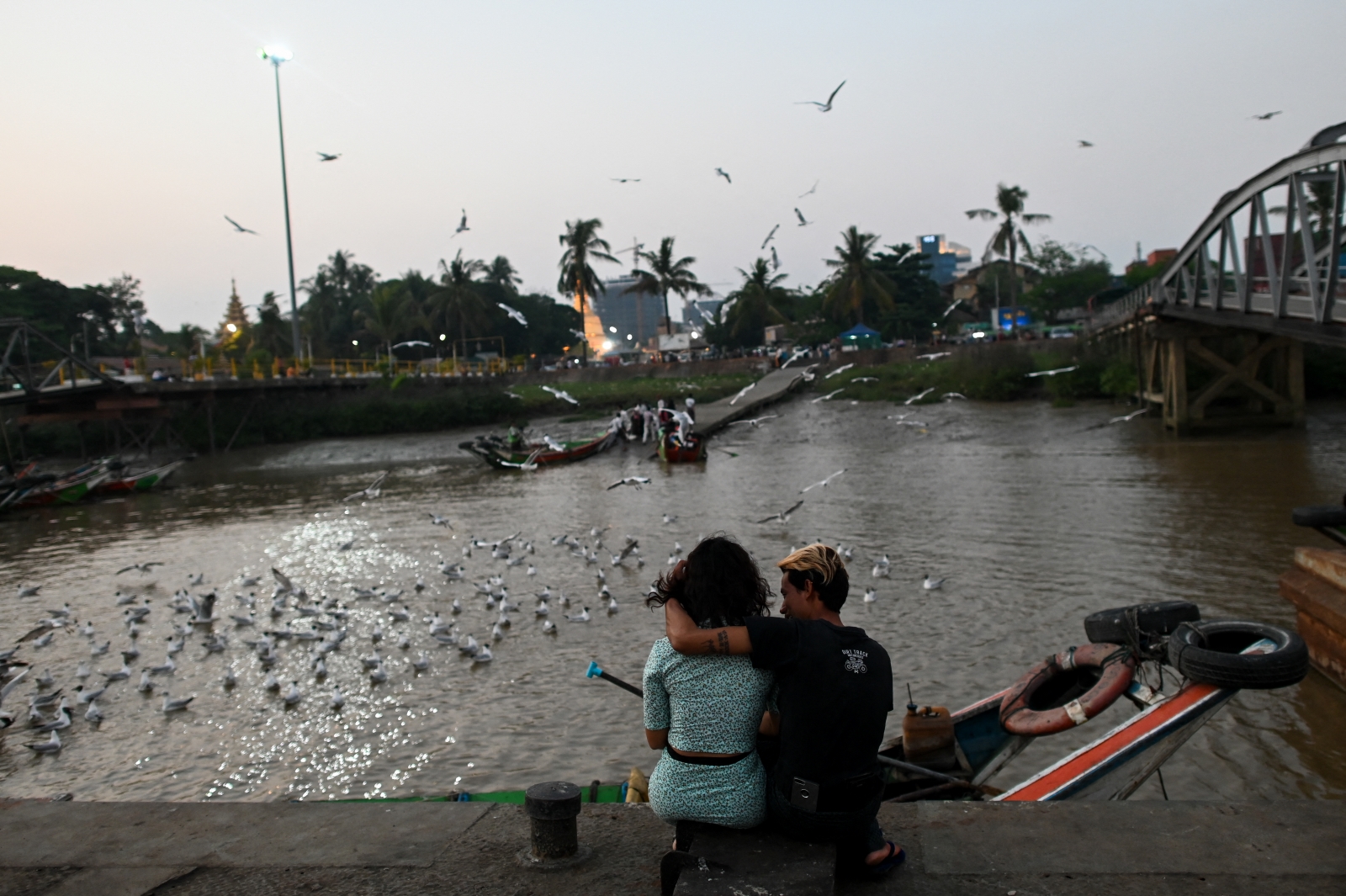OPINION
A frontline medic writes of two individuals she met in Kayah State, whose stories exemplify the diverse ways Myanmar’s youth are contributing to, and sacrificing for, the revolution.
By SU
As the conflict grinds on, every month brings fresh horrors. Since early last year, when I left my medical studies in Yangon and joined a team of several dozen medics in Karenni State (also known as Kayah), I have seen civilians and resistance fighters whose bodies have been mutilated by landmines and shrapnel from shells. Meanwhile, the forces of the military junta have repeatedly bombed our medical facilities, forcing us to move from place to place over rough and dangerous terrain.
I have recounted these ordeals in a previous article for Frontier, but in this follow-up piece, I will describe two individuals whose stories have, in very different ways, helped to bring meaning and purpose to our work, and put all our hardships in perspective.
The first individual is Maw Hpray Myar, a 23-year-old Karenni woman who founded the Htel Phoe Music Learning Centre in the state earlier this year. She first discovered her love of music aged 15, and by the time of the military coup in February 2021, she was studying music at a school founded by a South Korean organisation in Yangon.
The violin was her speciality, and she thought the instrument would take her far. “I wanted to be a violinist touring the world,” she told me when we met in Karenni. In addition, she demonstrated exceptional skills at the guitar and piano as well as a good command of musical theory.
But music is also intertwined with her Christian faith and her desire to uplift young people in Karenni villages, which have experienced decades of conflict, poverty and neglect. “I want to praise the Lord through music and teach children, so that they can empower and heal themselves through melodies,” she said.
So, when the COVID-19 pandemic shuttered schools in 2020, Hpray Myar returned to her family home near the border between Karenni and Shan states and taught music as a volunteer in nearby churches and orphanages.
When the military seized power early the following year, she said, “I was totally shocked and I felt lost, robbed of my dreams. But I knew we must fight back against that ugly and unfair coup, because we’re born to live by our beliefs.”
Like many other students she quit her studies and joined the Civil Disobedience Movement against military rule. “I wanted to complete my education and go abroad for further studies,” she said of what she was willing to sacrifice. “I wanted to return home to my small village as a successful violinist, but I couldn’t pursue my dreams under this military dictatorship.”
Hpray Myar played the violin during peaceful protests, which swept Myanmar in the weeks after the coup. But when the military brutally crushed these demonstrations, she wanted to swap the instrument for a gun and join the growing armed struggle. However, after successfully completing combat training, which she found “a very tough and exhausting experience”, she switched to training as paramedic and joined our medical team.
“It’s really pleasing to see someone survive or get relief from pain whenever I perform well as a medic, even though I had never been one before,” she said. “It’s also heart-breaking seeing any of our comrades leave us forever, or when children lose their fathers and homes because of the cruel actions of the blood-soaked junta.”
While working at our hospital in a remote village of eastern Demoso Township, Hpray Myar taught music to local children, who became really fond of playing her two violins, keyboard and guitar. She also played the violin to adults and children who were traumatised by war, as a form of musical therapy.
Keeping this up proved difficult, particularly as junta air strikes and artillery barrages pushed us to repeatedly relocate. “It’s not easy to maintain musical instruments to begin with, but the most difficult part is when we have to migrate. I must carry the keyboard, violins and guitar together with my personal belongings. I have to call for help but, thanks to God, I’m always surrounded by kind and helpful people.”
She also raised funds for communities displaced by the conflict and helped provide them with shelter and medical aid, including nutrition and deworming programmes for children, for whom she also delivered stationary to continue their education. Her relief missions took her to distant rural areas, including on Karenni’s southern border with Karen State, also known as Kayin.
Hpray Myar’s main goal, though, was to establish a music school. However, she had to abandon the site she initially chose for the school because the military was encroaching on the area. So, she kept on giving informal lessons in camps for displaced people, as well as in schools established by local communities outside of junta control, after requesting the schools to teach music as an additional subject.
But here, too, she faced obstacles. People sometimes told her the noise would disturb the villagers, or that her lessons were inappropriate amid so much conflict. “Mostly, I was welcomed,” she said of the schools and camps, “but sometimes, I was asked why I was trying to teach music during a time of war.” But she persisted because she had witnessed how music can heal and empower people.
She eventually founded the Htel Phoe Music Learning Centre in June this year, after collecting enough donations and renting a building from a school in eastern Hpruso Township, just south of Demoso. The school teaches three-month courses in violin, piano, guitar and musical theory, as well as English, and a first batch of nearly 30 students, aged 10 to 18, has already graduated. It was moving to watch the graduation ceremony, where the children presented Hpray Myar with handmade crafts to show their gratitude, often with tears in their eyes.
“This was my first step We’re facing so many difficulties at this time, but education matters to the revolution,” she said as she looked forward to a fresh intake of students. “The world has seen and heard about the merciless, brutal actions of the blood-soaked junta, including air strikes on schools and innocent children, but these can only destroy our material possessions – not our education and revolutionary spirit. I want to serve as a bridge to a better future, so that people can live their dreams.”
The comfort and strength that Hpray Myar is providing through music is a vital antidote to the pain and loss of war, which the people of Karenni bear with incredible fortitude. This resilience was exemplified by the second individual whose story I would like to tell, a 29-year-old resistance fighter called Ko Phyar Rel, who was admitted to our hospital in eastern Demoso with severe injuries from a landmine soon after I arrived in Karenni.
Before the coup, he worked as a truck driver in the state. During his childhood he witnessed the military invade and destroy Karenni villages, as they have done for decades. It was these memories, and his first-hand knowledge of what the military was capable of, that drove him to undergo rigorous training and join the Karenni Nationalities Defence Force, an armed resistance group formed after the coup.

But in late April last year, he was patrolling with his comrades when he stepped on a mine. The explosion propelled him into the air, and after landing in excruciating pain, he saw a drone piloted by junta forces hovering above him. Noticing this threat, he called on his comrades to stay away and then lay still, pretending to be dead.
When the drone eventually left, he radioed the others and a four-wheel-drive car arrived to take him and three other fighters, who had been wounded by the same landmine, to our hospital. His uninjured colleagues kept telling him, “Don’t give up!”, “Just a little longer!”, but he didn’t think he would survive the bumpy, one-hour journey.
One of the wounded died on arrival at the hospital due to massive blood loss, but Phyar Rel and the other two were taken into the emergency department, still clinging to life. Phyar Rel’s lower right leg was shattered and our surgeon had to amputate it above the knee to stop him bleeding to death. While he kept his left leg, debris from the mine had shredded areas of muscle, revealing the bone and rendering the limb unusable. His face, hands and genitals were injured too, and the surgeon also removed his testes during the operation, which lasted five hours.
Phyar Rel’s wounds needed to be dressed repeatedly using betadine and alcohol, which caused him excruciating pain. During one wound dressing a week after his injury, we discovered one of his major blood vessels was damaged and bleeding profusely, so we rushed him back to the operating theatre. One consolation during these ordeals was the presence of his comrades, who took turns to check on him, and of his elder sister, who helped to nurse him.
More than a month into his treatment, on June 2, the military shelled the area. “Realising I couldn’t move, let alone run, I tried to hide and protect my hands,” he later told me of the incident. “I thought that if I were to be injured again, let it only be my head and neck, putting an end to my suffering, without causing further harm to my hands. I couldn’t use my legs but I had my two hands left. I didn’t want to lose them.”
One villager died from shrapnel to the chest, but luckily no shells landed within the hospital compound. Nonetheless, Phyar Rel was relocated the following day with the staff and other patients to a village an hour’s drive away, where a new hospital was being built. Here, the agonising wound dressings continued, and later that month, his unamputated left leg began to bleed uncontrollably. However, there was no operating theatre yet so we had to drive him back to the old hospital, where, due to irreparable damage to major blood vessels, the last of his legs had to be amputated.
We took him back to the new hospital the following day to continue his treatment. “There was not a moment where I didn’t feel pain,” he said of that time, although he regularly took painkillers. “I had to take oral analgesic drugs as well as injections of antibiotics and analgesics three to four times a day for several days. Soon I couldn’t stand the sight of syringes.”
On October 12, the area was hit with mortar fire and, this time, one shell landed within the hospital compound, injuring one of my colleagues. We quickly relocated to the west of Demoso, more than two hours’ drive away, where he continued to receive care at another hospital. After a month, he was taken back to the previous site because he wanted to be close to his comrades, even though he couldn’t fight anymore.
In November, Phyar Rel’s amputated legs started to scar over and he was discharged from the hospital. About nine months later, he was fitted with artificial legs at a rehabilitation centre for amputees in western Demoso, where he continues to stay. It took much practice, though, before he could use his new legs properly.
“At the centre, I sometimes felt depressed when I saw those with only one amputated leg who could get back to walking faster than me,” he told me. “But after trying diligently for months, I could finally walk like the others.”
He has since taken on office duties in support of the armed struggle, and despite his permanent injuries and all the pain he’s suffered, I’ve never heard him express any regret over joining the fight. He says he’s determined to move forward, using every ounce of his strength for the cause.
Phyar Rel and Phray Myar have not made the same sacrifices or suffered equally. However, they both exemplify the commitment of Myanmar youth to the revolution, and the diversity of ways they are contributing to it. As someone who left their medical studies to serve on the front lines, I can say that our shared struggle has bound us together, no matter how different our talents and passions may be. We will continue fighting as one, in the belief that, one day, we will return home victorious.







